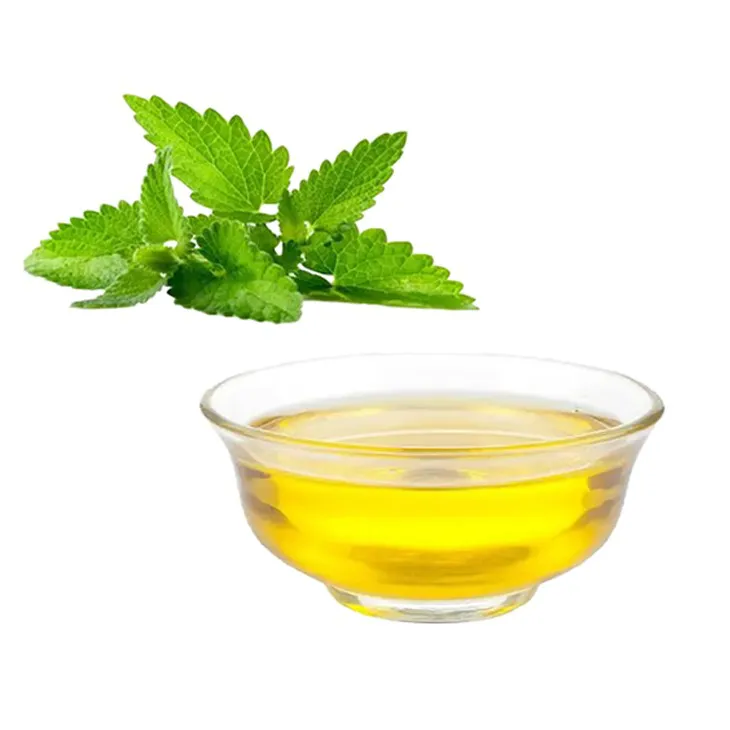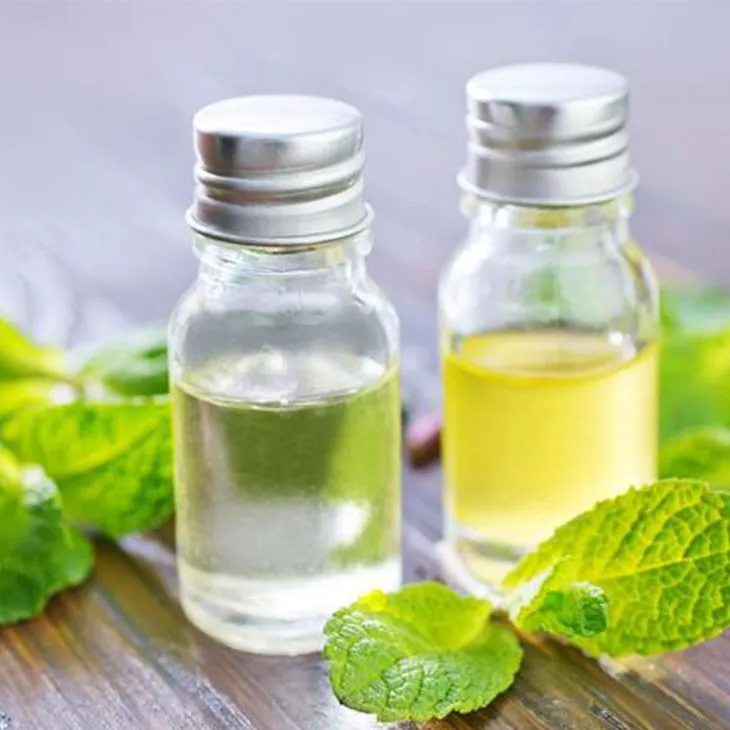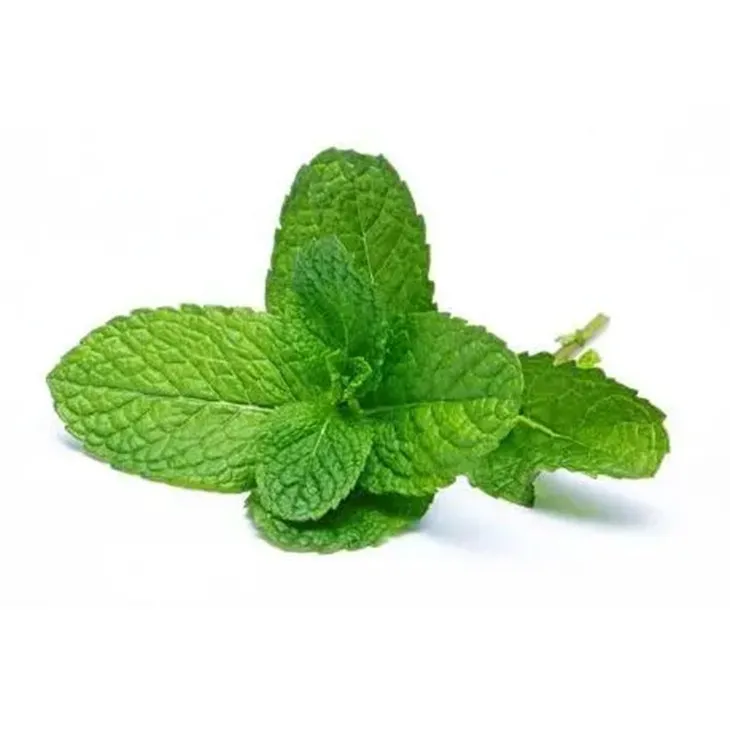- 0086-571-85302990
- sales@greenskybio.com
Peppermint Oil: Uses, Advantages, and Manufacturing Processes
2024-11-12

1. Introduction
Peppermint Oil is a highly versatile natural product that has gained significant popularity in various industries. It is derived from the peppermint plant, which is known for its characteristic aroma and a host of beneficial properties. This essential oil has a long history of use, dating back to ancient civilizations, where it was valued for its medicinal and aromatic qualities.

2. Uses of Peppermint Oil
2.1 Health Applications
Headache Relief: Peppermint Oil has been found to be effective in treating headaches. When applied topically to the temples or forehead, it can provide a soothing effect. The menthol in peppermint oil is thought to have a vasodilatory effect, which helps in reducing the pain associated with headaches.
Muscle Tension Reduction: It is also beneficial for reducing muscle tension. Massaging the affected muscles with peppermint oil can help relax them. This is due to its ability to penetrate the skin and reach the underlying muscle tissue, where it can act as a natural muscle relaxant.
Oral Health Improvement: In the realm of oral health, peppermint oil is a common ingredient in many dental products. It has antibacterial properties that can help fight against oral bacteria, reducing the risk of cavities and gum diseases. It also gives a fresh breath due to its pleasant smell.
2.2 Food Applications
Unique Flavor in Desserts: Peppermint oil is widely used in the food industry, especially in desserts. It imparts a distinct and refreshing minty flavor to cakes, cookies, and other sweet treats. For example, peppermint - flavored brownies or peppermint - cream - filled chocolates are very popular.
Enhancing Ice Creams: In ice creams, peppermint oil adds a cool and refreshing taste. It pairs well with chocolate, creating the classic mint - chocolate combination that is loved by many. The addition of peppermint oil can transform a simple ice cream into a more indulgent and flavorful dessert.
Flavoring Herbal Teas: Herbal teas often contain peppermint oil for its flavor and aroma. Peppermint tea, in particular, is known for its soothing and digestive properties. The addition of peppermint oil gives the tea a refreshing and invigorating taste, making it a popular choice for those who want a caffeine - free beverage.
2.3 Beauty Applications
Shampoos: In shampoos, peppermint oil can provide a cooling and tingling sensation on the scalp. It also has the potential to improve scalp health by promoting blood circulation. This can help in maintaining healthy hair follicles and may even contribute to hair growth.
Body Lotions: When added to body lotions, peppermint oil gives a refreshing feel to the skin. It can also have a moisturizing effect and may help soothe irritated skin. The cooling sensation is especially pleasant during hot weather or after exercise.
Face Masks: Peppermint oil is sometimes included in face masks. It can help to cleanse the pores, reduce inflammation, and give the skin a rejuvenated look. However, it should be used with caution as it may be too strong for some sensitive skin types.

3. Advantages of Peppermint Oil
3.1 Natural Origin
One of the most appealing aspects of peppermint oil is its natural origin. In a world where there is an increasing demand for natural products, peppermint oil stands out as a viable alternative to synthetic chemicals. For consumers who are conscious about what they put on or in their bodies, the fact that peppermint oil is derived from a plant makes it an attractive option.
Natural Remedies Preference: Many people prefer natural remedies over pharmaceutical drugs due to concerns about side effects. Peppermint oil offers a natural way to address various health and beauty concerns. For example, instead of using chemical - laden headache medications, some individuals may choose to use peppermint oil for its headache - relieving properties.
3.2 Antioxidant Capabilities
Peppermint oil has excellent antioxidant capabilities. Antioxidants play a crucial role in protecting the body's cells from damage caused by free radicals. Free radicals are unstable molecules that can cause oxidative stress, which is linked to various diseases such as cancer, heart disease, and aging.
Cell Protection: By neutralizing free radicals, peppermint oil helps prevent cell damage. This can have a positive impact on overall health and may contribute to a youthful appearance. In the context of beauty products, the antioxidant properties of peppermint oil can help protect the skin from environmental damage, such as pollution and UV radiation.
3.3 Cooling and Tingling Sensation
The cooling and tingling sensation provided by peppermint oil is another advantage. This unique sensory experience is not only pleasant but also has practical applications. In products like shampoos and body lotions, the cooling sensation can make the user feel refreshed and invigorated.
Enhanced User Experience: In the case of topical applications for muscle pain relief, the tingling sensation can give the user an indication that the product is working. It also adds an extra dimension to the product's appeal, making it more desirable compared to products that do not offer such a sensory experience.

4. Manufacturing Processes of Peppermint Oil
4.1 Selection of High - Quality Peppermint Plants
The production of peppermint oil begins with the careful selection of high - quality peppermint plants. The quality of the plants is crucial as it directly impacts the quality of the resulting oil. Peppermint plants should be healthy, free from diseases and pests, and grown in suitable environmental conditions.
Ideal Growing Conditions: Peppermint plants thrive in well - drained soil and require a sufficient amount of sunlight. They also need proper watering and care during the growing season. Growers need to ensure that the plants are at the appropriate stage of growth for optimal oil production.
4.2 Harvesting of Peppermint Leaves
Once the peppermint plants have reached the appropriate stage of growth, the leaves are harvested. The timing of the harvest is critical. Peppermint leaves are typically harvested when the plant is in full bloom or just before. This is when the oil content in the leaves is at its highest.
Harvesting Methods: The leaves can be harvested by hand or using mechanical harvesters. Hand - harvesting is more labor - intensive but can be more precise, ensuring that only the mature leaves are collected. Mechanical harvesters are more efficient for large - scale production but may require careful calibration to avoid damaging the plants.
4.3 Steam Distillation
After harvesting, the peppermint leaves are subjected to steam distillation, which is the most common method for extracting peppermint oil. In this process, the leaves are placed in a distillation apparatus, and steam is passed through them.
Principle of Steam Distillation: The steam causes the volatile compounds in the peppermint leaves, including the oil, to vaporize. Since the boiling point of the oil is lower than that of water, the oil - laden vapor rises above the water - filled chamber.
4.4 Cooling and Condensation
The vapor produced during steam distillation is then cooled and condensed. This is typically done using a condenser, which cools the vapor back into a liquid state. As the vapor cools, it condenses into a mixture of water and peppermint oil.
Temperature Control: The temperature during the cooling and condensation process needs to be carefully controlled. If the temperature is too high, the oil may be degraded, and if it is too low, the separation of the oil from the water may be less efficient.
4.5 Separation of Peppermint Oil
Finally, the peppermint oil is separated from the water - oil mixture. This can be done through various methods such as decantation or the use of a separating funnel. The separated peppermint oil is then collected and stored in suitable containers.
Quality Control: Throughout the manufacturing process, quality control measures are essential. The final product should meet certain standards for purity, aroma, and chemical composition. Regular testing of the peppermint oil is carried out to ensure that it is of high quality and suitable for its intended applications.

5. Conclusion
Peppermint oil is a remarkable natural resource with a wide range of uses and numerous advantages. Its applications in health, food, and beauty industries are diverse and well - established. The natural origin, antioxidant capabilities, and unique sensory properties make it a valuable ingredient in various products. The manufacturing process, although complex, ensures the production of high - quality peppermint oil. As the demand for natural products continues to grow, peppermint oil is likely to maintain its significance and find even more applications in the future.
FAQ:
What are the main uses of peppermint oil in health?
Peppermint oil can be used to treat headaches, reduce muscle tension, and improve oral health in the field of health.
How does peppermint oil contribute to the food industry?
Peppermint oil imparts a unique flavor to desserts, ice creams, and herbal teas in the food realm.
What are the advantages of peppermint oil?
Peppermint oil has several advantages. Its natural origin makes it appealing to those who prefer natural remedies. It also has excellent antioxidant capabilities to prevent cell damage, and its cooling and tingling sensation can enhance the user experience in various products.
What is the manufacturing process of peppermint oil?
The production of peppermint oil is typically carried out through steam distillation. High - quality peppermint plants are selected, and the leaves are harvested at the appropriate time. Then, the leaves are subjected to steam distillation. The resulting vapor is cooled and condensed, and the peppermint oil is finally collected through careful separation processes.
Where can peppermint oil be found in the beauty sector?
Peppermint oil is often found in shampoos, body lotions, and face masks in the beauty sector.
Related literature
- Peppermint Oil: Properties and Therapeutic Applications"
- "The Use of Peppermint Oil in the Food Industry: A Review"
- "Peppermint Oil in Cosmetics: Benefits and Formulation"
- ▶ Hesperidin
- ▶ Citrus Bioflavonoids
- ▶ Plant Extract
- ▶ lycopene
- ▶ Diosmin
- ▶ Grape seed extract
- ▶ Sea buckthorn Juice Powder
- ▶ Fruit Juice Powder
- ▶ Hops Extract
- ▶ Artichoke Extract
- ▶ Mushroom extract
- ▶ Astaxanthin
- ▶ Green Tea Extract
- ▶ Curcumin
- ▶ Horse Chestnut Extract
- ▶ Other Product
- ▶ Boswellia Serrata Extract
- ▶ Resveratrol
- ▶ Marigold Extract
- ▶ Grape Leaf Extract
- ▶ New Product
- ▶ Aminolevulinic acid
- ▶ Cranberry Extract
- ▶ Red Yeast Rice
- ▶ Red Wine Extract
-
Lavender Extract
2024-11-12
-
Artichoke Extract
2024-11-12
-
Shikone Extract
2024-11-12
-
Phellodendron Extract
2024-11-12
-
Camu Camu Extract
2024-11-12
-
Giant Knotweed Extract
2024-11-12
-
Uridine-5'-monophosphate Disodium salt
2024-11-12
-
Saponin Extract
2024-11-12
-
Wheat Germ Extract
2024-11-12
-
Fenugreek Extract Powder
2024-11-12





















